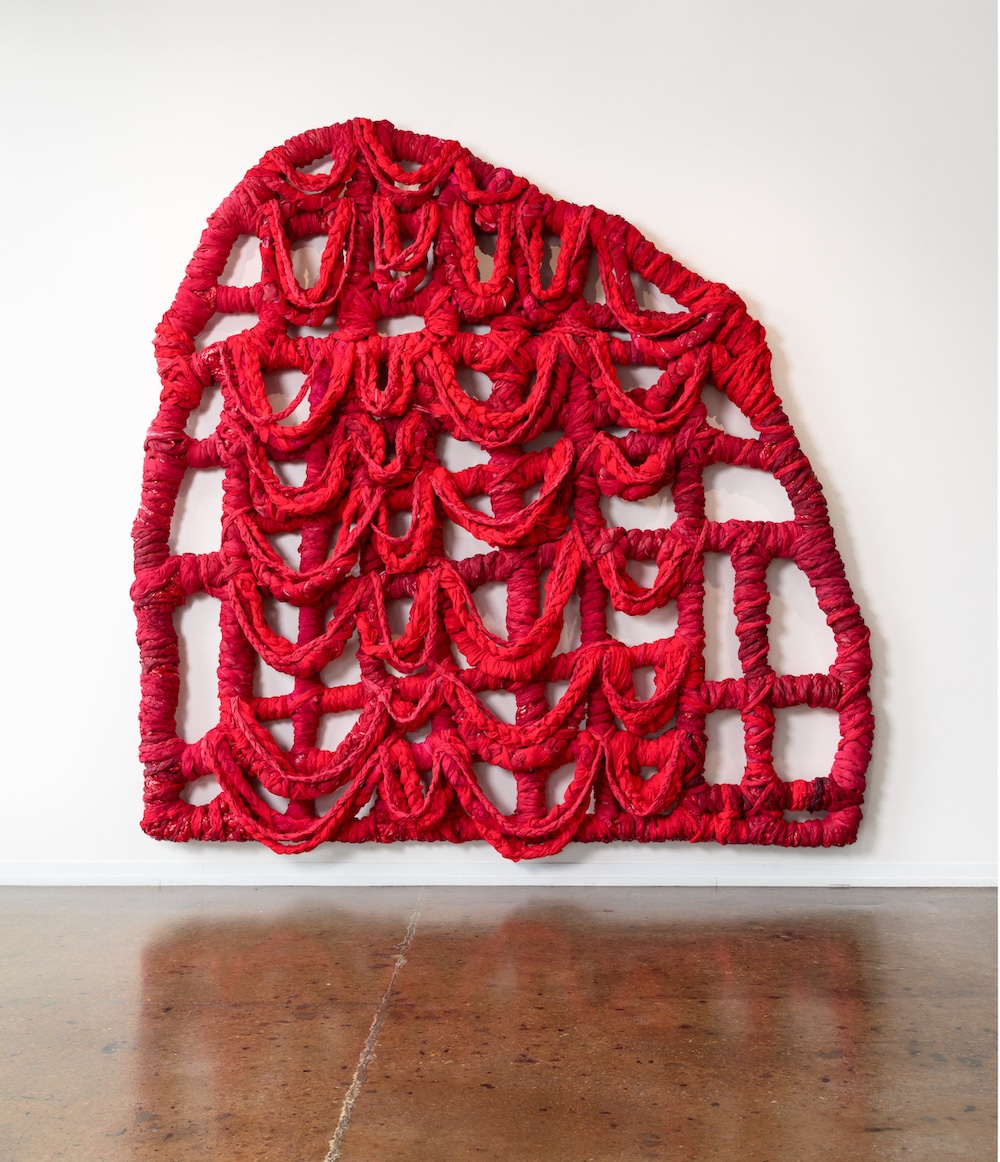Vadis Turner transforms everyday materials into textural art

The Nashville-based artist, who has two works at the local House, has recently opened a museum exhibition in Alabama for her sculptures made from domestic materials.
After receiving both a bachelor and a master’s degree in fine art at Boston University in the early 2000s, Vadis Turner was in what she remembers today as a ‘purgatory period’, between art school and real life. Little did she know then that moving back home to Nashville during this transition would define her career, which has recently culminated in a survey exhibition, titled Encounters, at Alabama’s Huntsville Museum of Art.
Turner’s lack of a studio and materials two decades ago had led the artist to scavenge through her parents’ bedroom and kitchen where she made garments from wax paper. The moment had sparked the challenge of ‘turning something really common into a precious sculpture’, and the answer was in manipulating the materials’ utilitarian gender connotations. ‘I was in the confines of the domestic sphere, but there was so much potential to speak within that space,’ she says. The initial discovery of a source so accessible yet promising has over the years evolved into a series of abstract sculptures, either freestanding or wall-hung, made out of various mundane materials, such as bedsheets, lingerie, curtain, or ribbon, in addition to more traditional ones, including resin, wax, cement, and birch wood.
Colourful and energetic, Turner’s loosely geometric works are demure about their sources, but her lush and malleable lexicon still hints a bed sheet’s charged sensuality or the heft of a curtain. The show at the American south coincides with a pivotal moment in the artist’s path. After nearly two decades in New York, she relocated to Nashville right before the pandemic and her work entered Soho House Nashville’s collection earlier this year. Two bedsheet sculptures, which also feature charred wood, acrylic and resin, fit the House’s commitment to exhibit works from more than 40 artists at a former factory building that was at some point inhabited by artists.